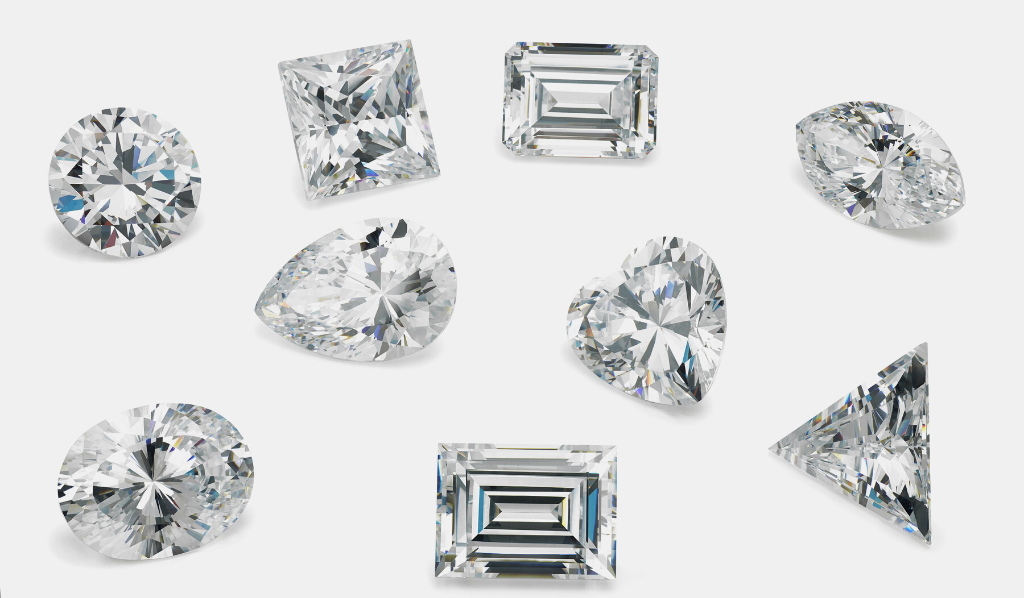When selecting a diamond, whether natural or lab-grown, its shape plays a crucial role in the overall aesthetic and brilliance. Understanding diamond shapes tips can help buyers make informed choices when investing in lab diamonds. Shapes affect not only the appearance but also the perceived size and sparkle of lab diamonds.
Popular Diamond Shapes and Their Characteristics
There are several diamond shapes to consider, each offering unique beauty. Among the most popular options for lab diamonds are round, princess, oval, cushion, pear, emerald, and marquise. Understanding diamond shapes tips ensures buyers select lab diamonds that suit their style and preference.
Round Cut Lab Diamonds
One of the most sought-after shapes is the round cut, known for its maximum brilliance. Round lab diamonds are often considered timeless and versatile. When considering diamond shapes tips, it’s essential to know that round lab diamonds reflect the most light, enhancing their sparkle.
Princess Cut Lab Diamonds
The princess cut is a modern favorite, known for its sharp edges and contemporary look. This square-shaped diamond offers brilliance similar to a round cut. Following diamond shapes tips, buyers can maximize the fire and brilliance of princess cut lab diamonds by selecting high-quality facets and proportions.
Oval Cut Lab Diamonds
Oval lab diamonds provide an elongated shape that creates an illusion of greater size. When considering diamond shapes tips, it’s important to check symmetry, as well-cut oval lab diamonds exhibit exceptional brilliance and a flattering appearance on the hand.
Cushion Cut Lab Diamonds
A cushion cut is known for its soft edges and vintage appeal. Cushion lab diamonds blend a square or rectangular shape with rounded corners, providing a distinctive look. Diamond shapes tips suggest choosing cushion lab diamonds with a higher clarity grade to enhance their brilliance.
Pear Cut Lab Diamonds
Pear-shaped lab diamonds combine the elegance of a round and marquise cut, featuring a tapered end. This unique shape elongates fingers and creates a striking effect. When following diamond shapes tips, selecting well-proportioned pear lab diamonds ensures balanced symmetry and enhanced sparkle.
Emerald Cut Lab Diamonds
Emerald cut lab diamonds emphasize clarity over brilliance with their step-cut facets. These rectangular stones exude sophistication and offer a sleek look. Diamond shapes tips recommend choosing emerald lab diamonds with high clarity, as imperfections can be more visible due to their open facets.
Marquise Cut Lab Diamonds
Marquise lab diamonds feature an elongated shape with pointed ends, making them appear larger than their actual carat weight. Following diamond shapes tips, buyers should focus on symmetry to ensure that marquise lab diamonds maintain a balanced appearance.
Factors to Consider When Choosing Lab Diamonds
Aside from shape, several factors influence the beauty and value of lab diamonds. Diamond shapes tips help buyers select lab diamonds based on cut quality, carat weight, clarity, and color.
Cut Quality and Brilliance
The cut of lab diamonds determines how well they reflect light. Following diamond shapes tips ensures selecting well-cut lab diamonds that maximize brilliance. A poor cut can reduce the sparkle, making the diamond appear dull.
Carat Weight and Perceived Size
Carat weight affects the size of lab diamonds, but some shapes create an illusion of a larger size. Understanding diamond shapes tips helps buyers choose lab diamonds that appear bigger, even with a lower carat weight.
Clarity and Inclusion Visibility
Clarity is crucial when selecting lab diamonds. Some shapes, like emerald and Asscher cuts, highlight inclusions more than others. By following diamond shapes tips, buyers can prioritize clarity to ensure their lab diamonds look flawless.
Color Considerations
The color of lab diamonds ranges from colorless to light yellow or brown. Some shapes, like round and princess cuts, hide color better than others. Diamond shapes tips suggest choosing a shape that minimizes color visibility to enhance the diamond’s beauty.
The Advantage of Lab Diamonds
Lab diamonds offer an ethical and cost-effective alternative to natural diamonds. Understanding diamond shapes tips ensures buyers make informed choices when purchasing lab diamonds. Lab diamonds are identical to natural diamonds in terms of composition and brilliance but are more environmentally friendly.
Conclusion
Selecting the perfect diamond involves considering shape, cut, clarity, and carat weight. By following diamond shapes tips, buyers can make educated decisions and find lab diamonds that suit their preferences. Whether choosing a classic round cut or a unique marquise shape, lab diamonds provide a stunning and responsible option for jewelry lovers.

